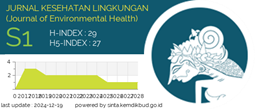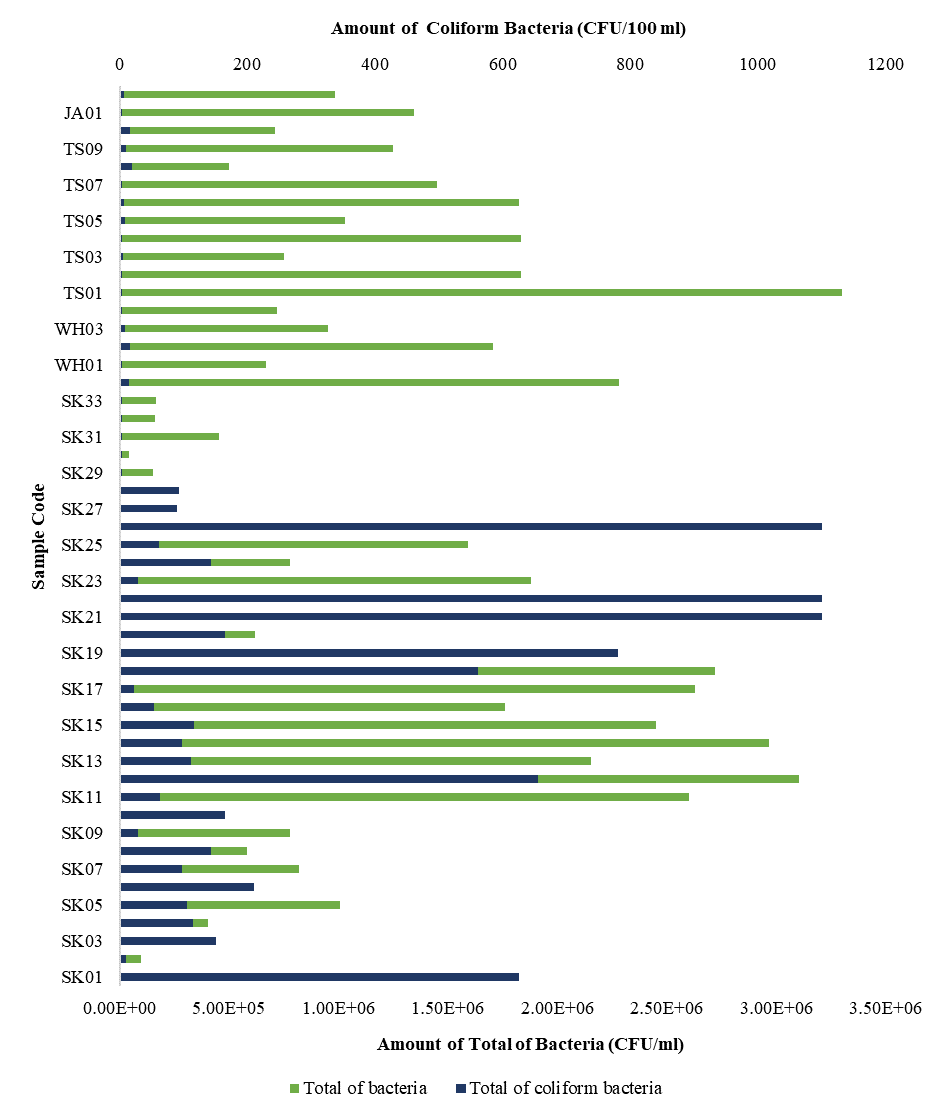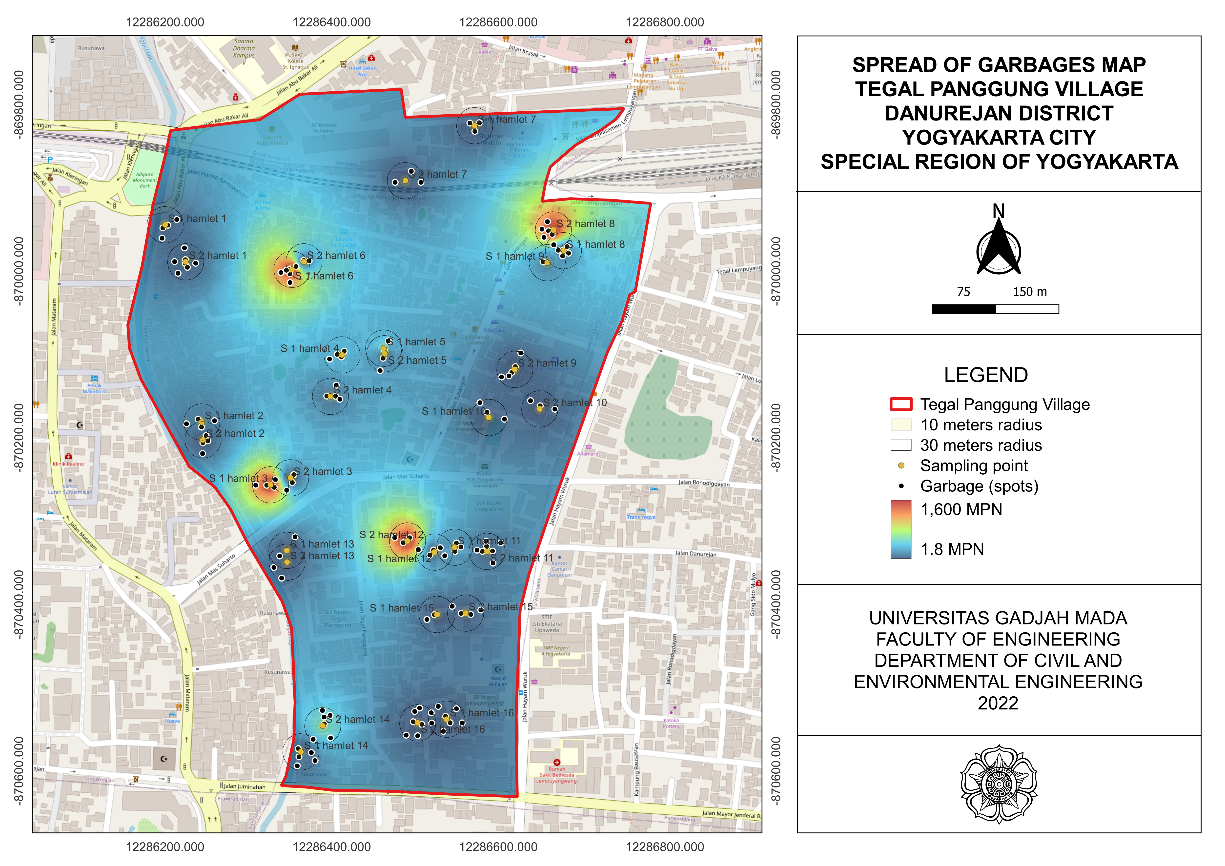Risk Factors of Anthrax Transmission in Pacitan Regency
Downloads
Introduction: Anthrax was a zoonotic disease caused by the bacterium Bacillus anthracis in several regions of Indonesia. Transmission of anthrax in animals and humans occurred by direct contact with anthrax spores present in meat, soil, or plants. This study aimed to analyse the risk factors and recommend preventive action for anthrax transmission. Methods: This research used a descriptiveanalytic study to describing cases based on the case definition, primary data, and secondary data. The primary data were collected from the field observations and interviews with farmers and people in the community. The secondary data were obtained from the Pacitan District Health Office and Surabaya Technical Centre for Environmental Health and Disease Control. Data analysis of this study applied content analysis techniques that describe the actual situation of the community. Results and Discussion: Risk factors for anthrax transmission in Pacitan Regency included livestock traffic from endemic anthrax areas and lacked public knowledge about anthrax disease, rainfall, and topography. Conclusion: Anthrax disease control measurements include surveillance and investigation periodically, treatment of the suspected livestock, vaccination, disinfection, and socialisation. The government needs to control livestock traffic by providing proper regulation. Also, the public might improve knowledge and awareness with their livestock
Olani A, Dawo F, Lakew M. Laboratory Diagnostic Methods and Reported Outbreaks of Anthrax in Ethiopia. Eur J Biol Res. 2020;10(2):81–95. https://zenodo.org/record/3773896#.YL-AhtszbIU
Yadeta W, Jilo K. Recent Understanding of the Epidemiology of Animal and Human Anthrax in Ethiopia with Emphasis on Diagnosis , Control and Prevention Interventions- Review. World J Med Sci. 2020;17(1):1–9. https://doi.org/10.1155/2020/1295381
Martindah E. Risk Factors, Attitude and Knowledge of Farmers in Controlling Anthrax. Indones Bull Anim Vet Sci. 2018;27(3):135-144. https://doi.org/10.14334/wartazoa.v27i3.1689
Pilo P, Frey J. Pathogenicity, Population Genetics and Dissemination of Bacillus Anthracis. Infect Genet Evol. 2018;64(1):115–125. https://doi.org/10.1016/j.meegid.2018.06.024
Ministry of Agriculture of Republic Indonesia. Guidelines for Control and Eradication of Infectious Animal Diseases (PHM)-Anthrax Disease Series. 2016. http://luk.tsipil.ugm.ac.id/artikel/kesehatan/KementanAnthrax.pdf
Mwakapeje ER, Assenga JA, Kunda JS, Mjingo EE, Makondo ZE, Nonga HE, et al. Prevention, Detection, and Response to Anthrax Outbreak in Northern Tanzania using One Health Approach: A Case Study of Selela Ward In Monduli District. Int J One Heal. 2017;3(1):66–76. https://doi.org/10.14202/IJOH.2017.66-76
Zuyina I, Sari R, Apriliana S. Gambaran Umum , Prevalensi , dan Pencegahan Antraks pada Manusia di Indonesia General Description, Prevalence, and Prevention of Human Anthrax in Indonesia. BALABA. 2020;16(2):135–148. https://doi.org/10.22435/blb.v16i2.3401
Clarasinta C, Soleha TU. Penyakit Antraks : Ancaman untuk Petani dan Peternak. Majority. 2017;7(1):158–164. https://juke.kedokteran.unila.ac.id/index.php/majority/article/view/1763
Specialist of Childern Health Universitas Airlangga. Modul, PPK, dan Rekomendasi Divisi Ilmu Kesehatan Anak, Penyakit Antrax. Surabaya: Universitas Airlangga; 2017. http://spesialis1.ika.fk.unair.ac.id/wp-content/uploads/2017/03/TI20_Anthax-Q.pdf
Suardana W. Penyakit Menular dari Hewan ke Manusia. Yogyakarta: PT Kanisius Yogyakarta; 2015. 89 p.
Abawi I, Fibriana AI. Analisis Spasial Faktor Lingkungan Fisik Daerah Endemik Antraks. Higeia. 2019;3(2):190–201. https://doi.org/10.15294/higeia.v3i2.25478
Central Bureau of Statistics. Livestock Population by District and Type of Livestock in Pacitan Regency. Pacitan: Central Bureau of Statistics; 2018. https://pacitankab.bps.go.id/statictable/2018/11/06/162/populasi-ternak-menurut-kecamatan-dan-jenis-ternak-di-kabupaten-pacitan-2017.html
Ministry of Health of Republic Indonesia. Handbook of Investigation and Management of Extraordinary Events of Infectious Diseases and Food Poisoning. Jakarta: Ministry of Health of Republic Indonesia; 2011. https://www.dinkes.pulangpisaukab.go.id/2018/09/20/buku-pedoman-penyelidikan-dan-penanggulangan-kejadian-luar-biasa-pedoman-epidemiologi-penyakit-penyakit-menular-dan-keracunan-pangan-edisi-revisi-tahun-2017/
Rao S, Traxler R, Napetavaridze T, Asanishvili Z, Rukhadze K, Maghlakelidze G, et al. Risk Factors Associated with the Occurrence of Anthrax Outbreaks in Livestock in the Country of Georgia: A Case-Control Investigation 2013-2015. PLoS One. 2019;14(5):1–16. https://doi.org/10.1371/journal.pone.0215228
Beganda I, Dariani W, Yudianingtyas DW. Investigasi Outbreak Penyakit Antraks di Kabupaten Polewali Mandar Tahun 2016. In Proceedings of the 20th FAVA & the 15th KIVNAS PDHI Hemera Zoa. 2018;(1):385–389. https://jurnal.ipb.ac.id/index.php/hemera/article/view/23761
Hoffmann C, Zimmermann F, Biek R, Kuehl H, Nowak K, Mundry R, et al. Persistent Anthrax as a Major Driver of Wildlife Mortality in a Tropical Rainforest. Nature. 2017;548(7665):82–85. http://dx.doi.org/10.1038/nature23309
Juwita S, Purwanta P, Muflihanah M, Djatmikowati TF. Identification of Anthrax in Endemic Areas in South Sulawesi Province. J Ris Vet Indones. 2018;2(2):50–55. https://doi.org/10.20956/jrvi.v2i2.4423
iSIKHNAS. Manual Penyakit Hewan Mamalia, Penyakit Anthraks. Jakarta: iSIKHNAS; 2015. p. 119–32. http://wiki.isikhnas.com/images/a/a1/Penyakit_Anthrax.pdf
Parthiban S. Anthrax: A Re-Emerging Livestock Disease. Int J Nutr Food Sci. 2015;4(4):7. https://doi.org/10.11648/j.ijnfs.s.2015040401.12
Basri C, Dwidzuriputra AS, Sudarnika E. Factors Influencing Farmers Participation in the Vaccination Program against Anthrax in Bogor District, Indonesia. ACTA Vet Indones. 2019;29–34. https://doi.org/10.29244/avi.0.0.29-34
Chen WJ, Lai SJ, Yang Y, Liu K, Li X Lou, Yao HW, et al. Mapping the Distribution of Anthrax in Mainland China, 2005–2013. PLoS Negl Trop Dis. 2016;10(4):2005–2013. https://doi.org/10.1371/journal.pntd.0004637
Finke E-J, Beyer W, Loderstädt U, Frickmann H. Review: The Risk of Contracting Anthrax from Spore-Contaminated Soil – A Military Medical Perspective. Eur J Microbiol Immunol. 2020;10(2):29–63. https://doi.org/10.1556/1886.2020.00008
Kholilullah ZA, Massi MN, Muslimin L, Sjahril R. Identification of Virulence of Bacillus Anthracis from Soil by Multiplex PCR Technique in The South Sulawesi Province of Indonesia. Am J Infect Dis Microbioogy. 2016;4(6):118–122. http://www.sciepub.com/AJIDM/content/4/6
Apriliana UI, Suryanto BR, Handoko A. Anthrax : Emerging and Re-Emerging Diseasis Di Kabupaten Pacitan, Provinsi Jawa Timur. Balai Besar Veteriner Wates. 2017;17(1):21–31. http://bbvetwates.ditjenpkh.pertanian.go.id/content/buletin/anthrax__emerging_and_reemerging_diseasis_di_kabupaten_pacitan_provinsi_jawa_timur
2. Formal legal provisions to access digital articles of electronic journal are subject to the provision of the Creative Commons Attribution-ShareAlike license (CC BY-NC-SA), which means that Jurnal Kesehatan Lingkungan is rightful to keep, transfer media/format, manage in the form of databases, maintain, and publish articles.
3. Published manuscripts both printed and electronic are open access for educational, research, and library purposes. Additionally, the editorial board is not responsible for any violations of copyright law.
JKESLING by UNAIR is licensed under a Creative Commons Attribution-ShareAlike 4.0 International License.







































